Samsung Galaxy NX review
The Samsung Galaxy NX is the first 4G Android camera with intechangable lenses
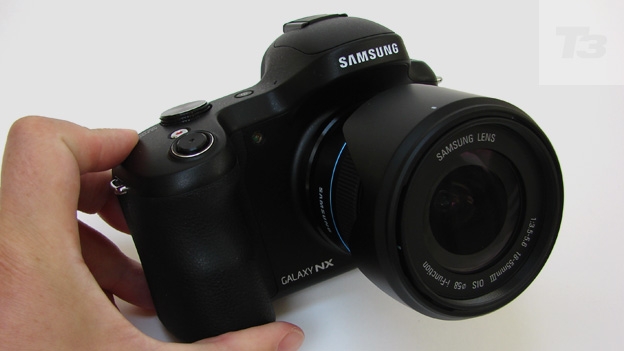
-
+
Easy uploading via Wi-Fi or 4G
-
+
DSLR-sized sensor
-
+
Range of lenses to choose from
-
-
Steep price tag
-
-
Sluggish viewfinder
-
-
Slightly bulky design
Why you can trust T3


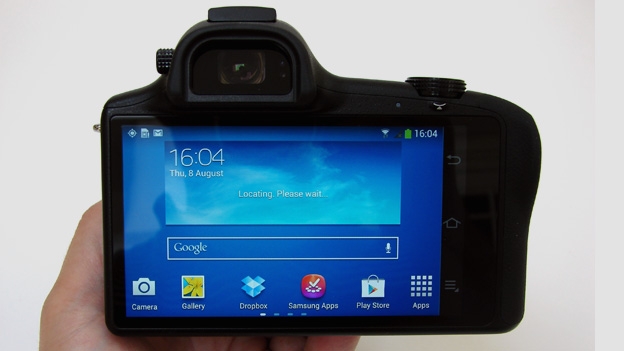
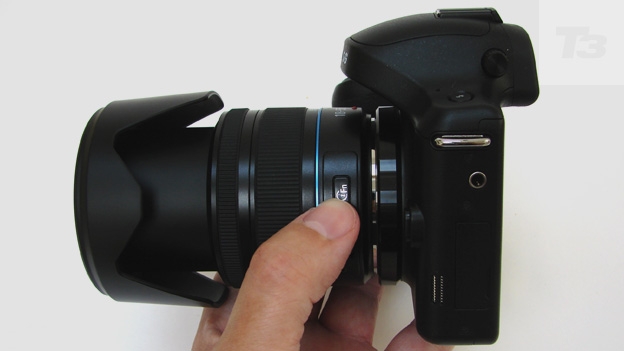
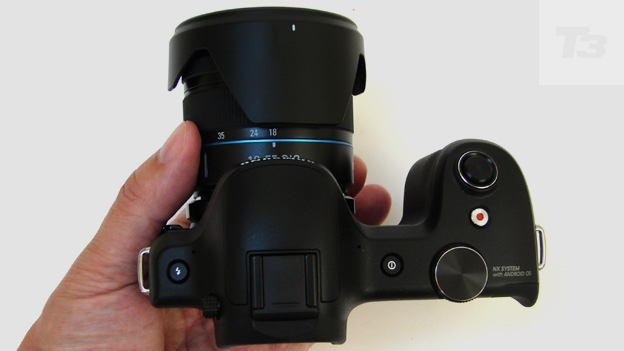
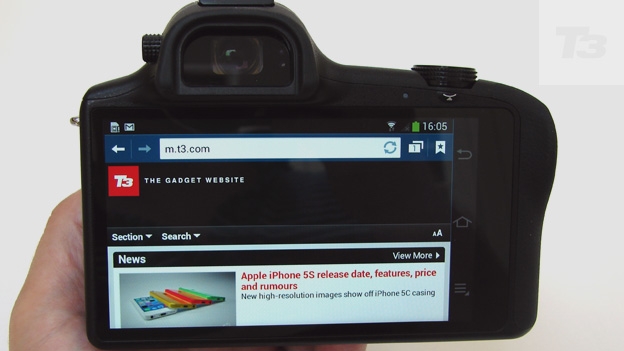


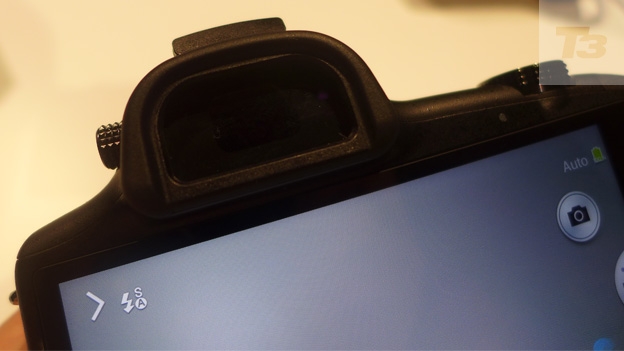
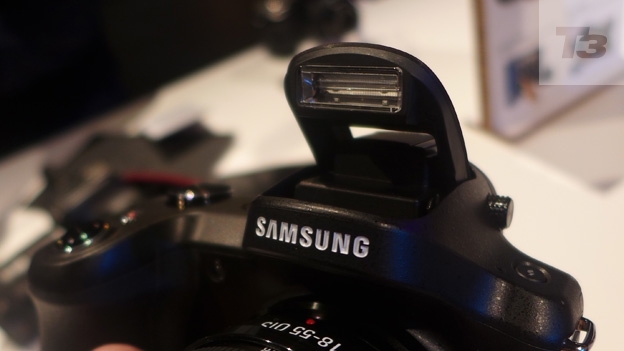

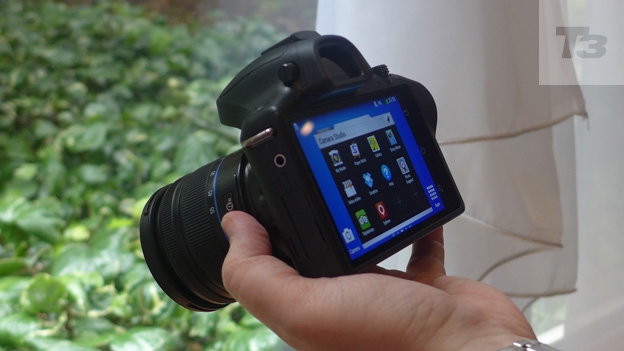


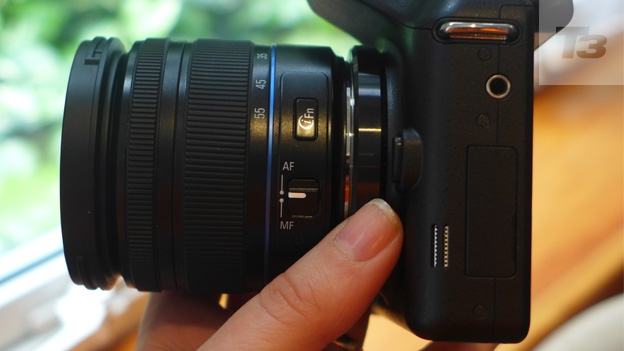
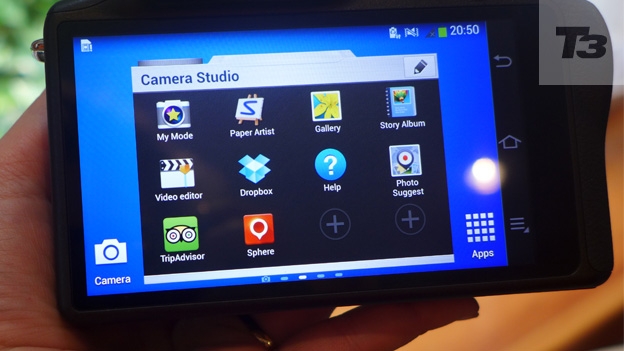
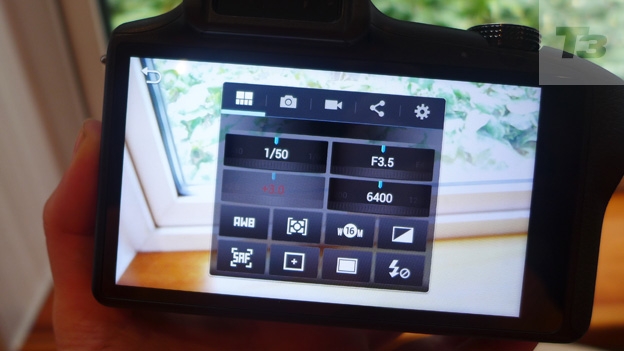
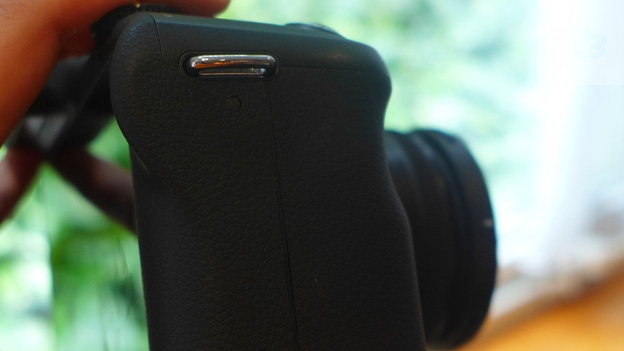
The Samsung Galaxy NX represents a merger between 2012's Galaxy Camera and the NX interchangeable lens system. Is this the shape of things to come?
As it sounds, the 20 megapixel Samsung Galaxy NX melds the interchangeable lens option provided by its NX series compact system cameras (CSC) with the image sharing and social media friendly aspects of the Android OS powered Samsung Galaxy Camera, which debuted at IFA 2012.
Being 4G enabled makes the Galaxy NX the 'world's most connected CSC' – according to Samsung.
In truth, pairing a camera based on an Android smartphone (the Samsung Galaxy S4) – albeit one on which you can't make calls, unless using Skype – with a pre-existing camera mount to enable the swapping of lenses always felt like it was going to happen.
Indeed, when we quizzed Samsung's Korean top brass face-to-face in 2012, they admitted the possibility was there.
The ability to take a picture with a much more 'professional' camera than your phone currently provides, but to be able to share the resultant shot just as easily, naturally holds appeal – not just to punters but also to a company doing so well out of phones.
The Galaxy NX doesn't simply replace what has gone before however. Instead we now have three premium-end Samsung camera strands: the core 'NX' range of more traditional photographic tools, secondly the non-interchangeable lens Galaxy Camera as previously reviewed, and thirdly the apparently best-of-both-worlds Galaxy NX – with Android 4.2 Jellybean OS and interchangeable lenses.
You don't need to buy two cameras if you purchase this one, suggests its maker, and in terms of connectivity options as regards compact system cameras, it currently trumps all comers.
Not only can you connect to the Internet via Wi-Fi (it was super quick to pinpoint our wireless network) and transmit pictures that way, you can additionally Bluetooth them, while a vacant slot is provided for a SIM card. The only thing it presently misses out on is NFC.
What is more of a surprise however is the asking price. Despite its intuitiveness and smartphone-like set up this isn't yet the mass-market device it feels it should and could be; largely because on launch it costs a whopping £1199 body only. And that's without a free tablet thrown in.
Alternatively if you don't already own an NX system lens there is the kit with a standard-issue (albeit Samsung iFunction equipped) 18-55mm zoom at a blow-the-budget £1299. There are currently 13 compatible Samsung lenses for the camera, including a new 10mm compact 'fish eye'.
OK, so the fact that we get an eye-level viewfinder does put the Galaxy NX in competition with less well 'connected' but nevertheless high-end rivals including the Sony NEX-7, Nikon V2, Olympus OM-D and Fuji X-Pro1 – all costing around a grand or more on launch.
But still, it feels expensive, probably because we're more used to Samsung traditionally offering the budget alternative. So, the $64,000 question: does the Galaxy NX justify its outlay in terms of handling and performance?
Samsung Galaxy NX: Controls
Though the Galaxy NX's body shape hints at the traditional SLR, there aren't the plethora buttons and dials that would immediately earmark this as an enthusiast camera. That's of course because most of the action takes place around the touch screen display, which the entire backplate is given over to, with a thicker 'bezel' on the right seemingly only to give your thumb somewhere to rest.
Still, the lack of hard keys does have the unfortunate effect of making it appear a little like a mock up on first glance, even if some may see beauty in its outer minimalism. You need to turn it on and witness this device in action to truly understand it – even though we have to go through the pre-amble of several set up screens before we can initially fire off a shot.
Images are committed to either a 2GB internal memory or microSD card – with an on-screen prompt offering the choice of specifying one or the other. The patronage of the latter format had us groaning, as the only reason for including such a tiny media slot is that it's another link back to the smartphone rather than a technical necessity. We'd much have preferred the ability to insert a full size SD/SDHC card.
What buttons there are here are to be found on the top plate. On the forward slope of the handgrip is a large and obvious shutter release button, behind which is a smaller though hard-to-miss record button for activating video shooting. A squeeze of this and the Galaxy NX starts filming, no matter which alternative shooting mode has been selected on-screen.
Incidentally, as a widescreen-ratio back screen has been provided, that's the format in which still images are also captured as a default, just like on a smartphone. If we wanted to shoot maximum resolution 20MP stills therefore, we had to specify that we wanted to shoot 3:2 ratio shots instead. The more regular 4:3 ratio for digital images isn't offered, not that it's a deal breaker by any means.
The other top plate buttons are the power button – a press of which re-activates the camera functionality in a couple of seconds, provided the device has already been set up – plus one for manually raising the pop up flash.
We also get an unmarked command dial that juts out subtly at the back where it falls under the thumb. Give this a spin and the virtual mode dial presented on the right hand side of the screen turns in tandem, which is very cool. As is the fact that when you're not using the device in camera app mode, the same wheel acts as a volume control instead.
Naturally the lion's share of the Galaxy NX's functionality is given over to the Android operating system, and that's where the rear plate screen comes in. Indeed the camera itself is presented as an 'app', rather than the be all and end all – again, just as on a smartphone.
It's also worth noting that part of the device's set up for using the camera prompts you to choose between 'standard' and (very grandly) 'professional' user. As we wanted access to as much as possible we chose the latter.
Samsung Galaxy NX: Screen
As with the Galaxy Camera before it, the screen here is large. But technically there are two screens on the Galaxy NX – the eye popping 4.8-inch one on the backplate that forms the camera's operational hub, plus the smaller 0.46-inch electronic viewfinder (EVF) directly above, which offers an alternative eye-level means of composing photos and videos.
Neatly, the EVF is activated with the aid of a built-in eye sensor – so bring your eye level with it and it switches on, turning the larger screen beneath off. Take your eye away and the 4.8-inch LCD flicks back on.
One thing we noticed here was that the EVF is slower to react to an eyeball in front of it than most DSLRs or fellow CSCs with the feature, so perhaps one area to be improved.
Again this wasn't a deal breaker for us, as the bigger screen demanded more of our attention. On this images simply look an absolute knock out. And 4.8 inches is still bigger than any screen on any professional DSLR costing several thousands of pounds, even if it does necessitate the camera itself looking a bit more elongated than your average DSLR or CSC.
Samsung Galaxy NX: Battery
The Galaxy NX comes with a noticeably chunky battery – it's the size of a box of matches - which slots into the familiar space at the base of the camera grip, providing added solidity. This is good for around 210 minutes of video shooting when fully charged, and we'd guess the larger size is because of the increased reliance on screen usage, GPS etc with this model.
It's worth stating that the Galaxy NX does not come with a standalone charger. Instead the battery is charged within the camera – as with your mobile phone. A mains plug and USB equipped lead are provided for this purpose.
Samsung Galaxy NX: Picture quality
Connectivity gubbins and operational gizmos aside, the major reason you should be considering this camera is the image quality delivered, for which sensor and lens are crucial. Like the rest of its NX range, Samsung's Galaxy NX has the advantage over Nikon, Olympus, Panasonic and Pentax compact system cameras of having a digital SLR-sized APS-C sensor at its core.
While Samsung's lens technology is no better or worse than the rest in terms of pictures produced, it does offer the ability to control some of the in-body functions via the lens itself, as a time saver; although here it didn't feel strictly necessary as the wow factor and intuitiveness of the rear screen allowed us to ignore all that.
We were using the general-purpose 18-55mm kit zoom supplied with the body. Using this, it's still possible to get those attractive, DSLR-style, shallow depth of field effects, keeping your subject sharp while the background blurs, though busy scenes will ultimately confuse the camera's AF.
More positively on the back screen images look an absolute knock-out. There's the choice of shooting 'superfine' JPEG or maximum quality Raw, or both together. Colours also appear stunning when there's plenty of light around.
As we've touched upon, the Galaxy NX offers Full HD video shooting in MPEG4 format, naturally at 1920x1080 pixels and the usual 30fps frame rate.
Like most CSCs and DSLRs, if you alter framing or subject mid shot then there's a wait of a second or two while the Galaxy NX visibly adjusts focus, so there's momentary blurring. Of course the lens also allows manual focus – with a switch for swapping between MF and AF provided on the barrel of the lens itself.
As the lens isn't mechanised, but rather turned by hand to zoom in or out, there's no motor to make its presence felt on the soundtrack. However we did notice that in quieter environs it will pick up your hand movements as you shuffle the lens forward or back; the lesser of two evils perhaps.
Samsung Galaxy NX: Verdict
Needless to say there are a lot of advantages to using the SamsungGalaxy NX, and it's not hard to see that one day all cameras (not just premium ones) will be made this way – in offering the ability to go online, and more besides, via the camera itself with a couple of taps of its touch screen.
After all, what are most digital cameras and phones these days but miniature computers? But in this case add to that a DSLR-sized sensor and the ability to swap lenses.
It's all very enticing but ultimately the question is: do such features for you, and us, justify the £1200+ asking price? Well, as a first of its kind device this is a product that will appeal to the early adopters, who have perhaps fewer qualms about being asked to dig deep into pocket. Added to that the image quality is such that a few professionals (photojournalists particularly) might also conceivably be tempted by the convenience factor here.
It does away with the need to transfer images across to a tablet, laptop or desktop before you can send them anywhere. And in any business, shortcuts that can save time can also save money.
However, if you can't afford the Galaxy NX you might want to look instead at both Samsung's older Galaxy Camera, which shares the Android OS intuitiveness and the majority of its connectivity options, plus the slightly newer Samsung NX300, which shares its APS-C sensor, playing a large part in delivering its excellent picture quality.
Samsung Galaxy NX release date: Out now
Samsung Galaxy NX price: £1199 body only or £1299 with 18-55mm iFunction zoom as reviewed
Sign up to the T3 newsletter for smarter living straight to your inbox
Get all the latest news, reviews, deals and buying guides on gorgeous tech, home and active products from the T3 experts
Gavin Stoker has been writing about photography and technology for the past 20 years. He currently edits the trade magazine British Photographic Industry News - BPI News for short - which is a member of TIPA, the international Technical Imaging Press Association.
-
 Is Apple TV+ quietly 'doing a Netflix'? Cancellations have fans fearful
Is Apple TV+ quietly 'doing a Netflix'? Cancellations have fans fearfulAcapulco is over after forthcoming season, but Apple's commitment to headline shows is something other streamers could learn from
By Mike Lowe Published
-
 Netflix's fantasy action blockbuster returns in July, five years after huge original
Netflix's fantasy action blockbuster returns in July, five years after huge originalThe Old Guard 2 is on the way
By Max Freeman-Mills Published
-
 Your smart home just got easier to manage – thanks to Matter’s new update
Your smart home just got easier to manage – thanks to Matter’s new updateIt brings three exciting features with it
By Lizzie Wilmot Published